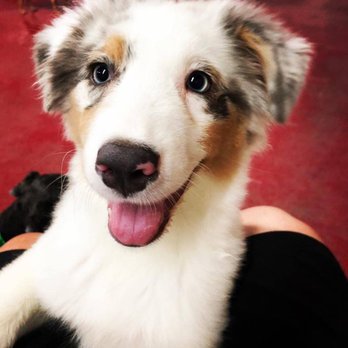South Tampa Pet Resort - Expert Doggy Daycare, Boarding & Grooming Services
Team has over 30 years of experience in the doggy daycare, boarding, grooming, service dog and training industry. Our experience and combined love of dogs, makes South Tampa Pet Resort your dog’s home away from home. While we opened our doors as South Tampa Pet Resort in January 2018, we have been a family for almost a decade.
In 2010, one of our owners, Richard Starks, helped build the facility that used to be known as ‘Lucky Dog’ in downtown Tampa, FL. Over the next few years, the team grew and on-boarded many experienced dog handlers, trainers, managers and groomers. Managers such as Carrie Broyles, Mallory Sarver, and Caren Conner all played a vital role in Lucky Dog’s success in it’s early years. As families grew and career paths changed, the original team dissolved and by 2016 each person had found their new journey in the canine industry.
Full circle. “I remember you…wow I am so thrilled that you are back”, the defining statement that makes it all worth it. When South Tampa Pet Resort first opened it’s doors in January 2018, we overheard this sentiment day in and day out from our beloved clients. The facility, that is now known as South Tampa Pet Resort, underwent multiple transitions and changes throughout 2016 and 2017 including name changes and new ownership. We believe that change brings opportunity, and our team is excited to see what opportunities await. Each of our managers have shared ownership in our company and your dog’s health, safety, and happiness comes first. Our family is thrilled to be back in Tampa, FL doing what we love to do…providing care for your furry friend while you are away.
At South Tampa Pet Resort, we have a high standard for personalized canine care. When you choose us, you can rest easy knowing that your dog is in a safe and stimulating environment. Located in Tampa, FL | Open 24/7.






Mallory Sarver, Kennel Manager / Owner
“I’ve been working in this industry for quite some time now and I love what I do and getting this opportunity to be part of ownership and management at South Tampa Pet Resort is an honor. And knowing that I’m in the same building where I devoted so much time and love towards the dogs, it feels like home. I am very passionate about dogs and Disney. The fact that I can hang out with dogs all day puts a smile on my face. This is my career and I love what I do, always have always will.”
Carrie Broyles, General Manager / Owner
“I always loved dogs as a child and started walking neighborhood dog’s when I was just 14 years old. That interest never went away and became a passion that lead me to job at an Airedale kennel when I was in my early 20’s. Over the next 20 years I ended up becoming a certified groomer, certified trainer and have worked at several kennels. I have built my life and career around the care and welfare of dog’s and wouldn’t want it any other way !”Caren Connor, Daycare Manager / Owner
“I absolutely love dogs and for me, the bigger the dog, the more love I get from them. I grew up on a farm in Nebraska so my love of animals started at a very young age and has continued my entire life. I have been in the pet industry for over 6 years and have been employed at doggy daycares for over 3 years of that time. I love the fact that each day is different, each dog is different and that keeps me motivated each and every day. I hope to inspire my crew to cherish the time spent with every dog at STPR and to value them as their own.”Richard Starks, Owner
“My life’s work has been devoted to improving the relationship between dogs and their handlers. I have spent equal time in both the working dog and pet industry and understand how important dogs are to our everyday lives. I feel grateful that I’ve been able to help train and distribute hundreds of service dogs to those in need as well as donate multiple trained police canines to units in need. While I have been a consult for dozens of kennels in the United States and helped build many of them from the ground up, I specifically helped build South Tampa Pet Resort in 2010 as well as Puppy Palace in Tampa, FL. I know what it takes to build and operate a safe and healthy facility, and I am so happy to be back home with my family at South Tampa Pet Resort”.
What they say
I love that this Facility is so clean and Well Managed. The employees always know my dog Bella when I walk in the door. She also is always wagging her tail when she comes home completely exhausted from the Amazing outdoor play yards. This facility is 24 hours hours and always works Great for my work schedule. Highly recommend this Facility. My baby Bella will never go anywhere else. Having the live videos in the yard also allows me to always view her, while she is playing all day!!!!
Pamela Hardy
Derek Wysocki
You'll love the New South Tampa Pet Resort....Dock Diving Pool opening soon, new and old friends playing again. Come on in and see some familiar faces!!



